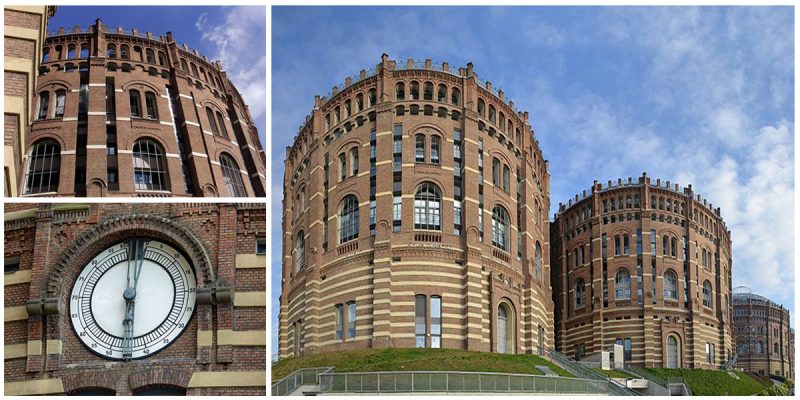In the 19th century, to better provide for its rapidly growing population, Viennese authorities began an unprecedented investment project in local infrastructure by building roads, rail and large-scale gas and electric utilities.
In 1896, the city started construction on what would become Europe’s largest gas plant.
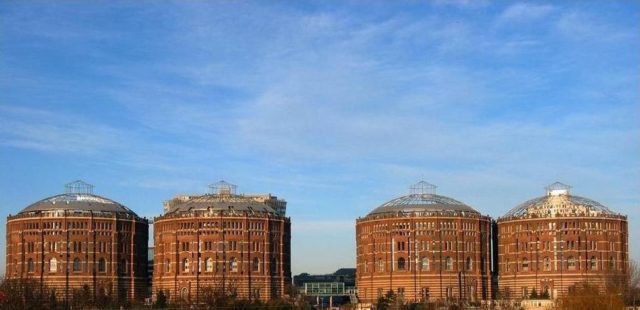
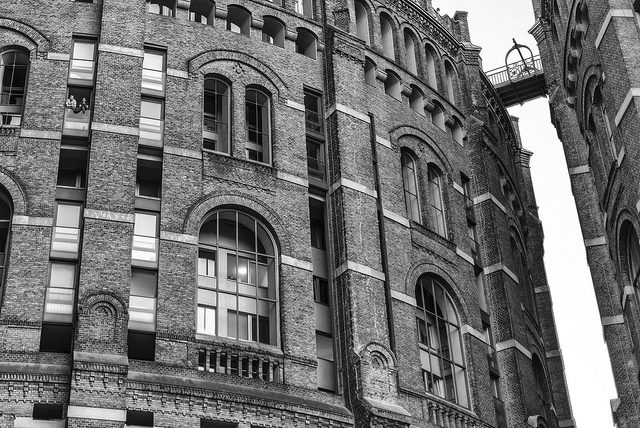
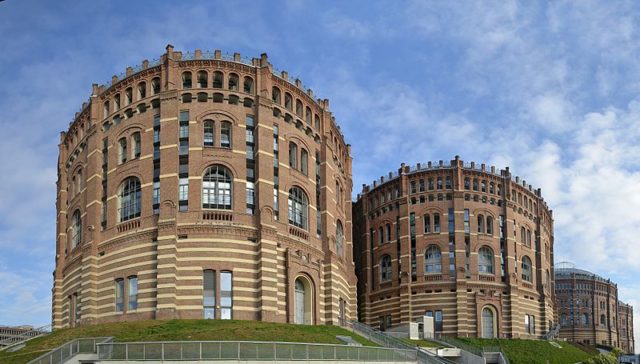
Previously, gas was provided by an English firm called InterContinental Gas Association (ICGA), but once the contracts with the ICGA expired, the city decided to construct facilities to handle its own gas needs. They decided that it was time to invest in large-scale gas and electric utilities to provide the townsfolk with coal gas for stoves, street lights, and furnaces.
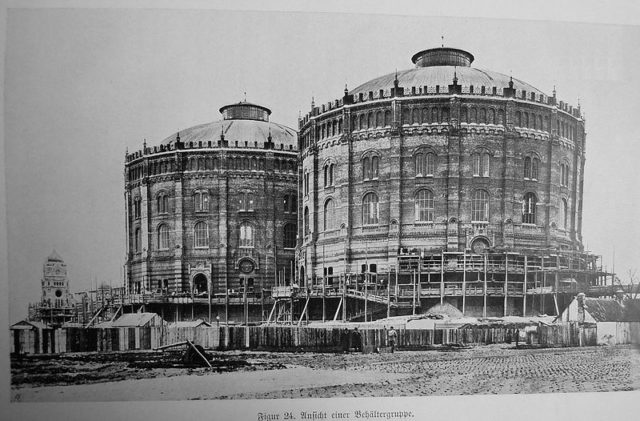
Located in the 11th district, Simmering, the four Gasometers were originally developed as brick-wrapped, cylindrical telescopic gas containers. The tanks were enclosed by a brick façade, each approximately 70 meters tall and 60 meters in diameter, and with a storage capacity of over 90,000 cubic meters. Inside, gas was dry-distilled from coal and stored before being distributed to the city’s gas network. The gas was originally used only to light street lamps, but by 1910, it was used for cooking and heating in private homes.
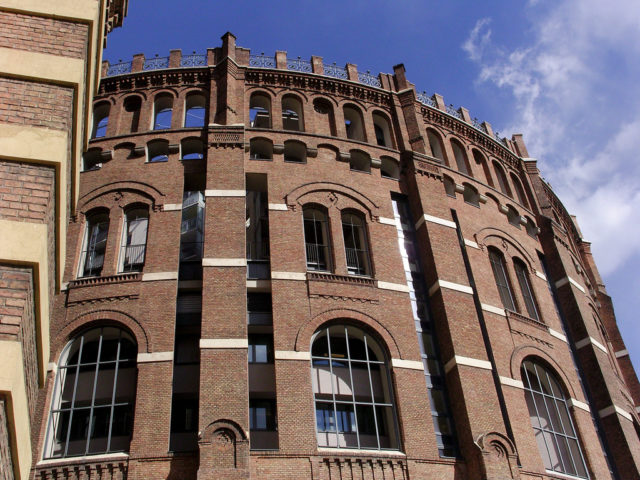
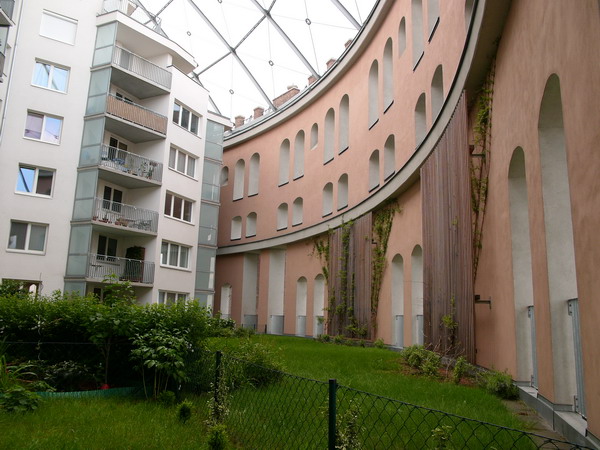
The purpose of these installations was to lower the gas pressure from high levels present in pipelines to atmospheric values suitable for to end users. They were also used to regulate the supply between periods of high and low demand during the day.
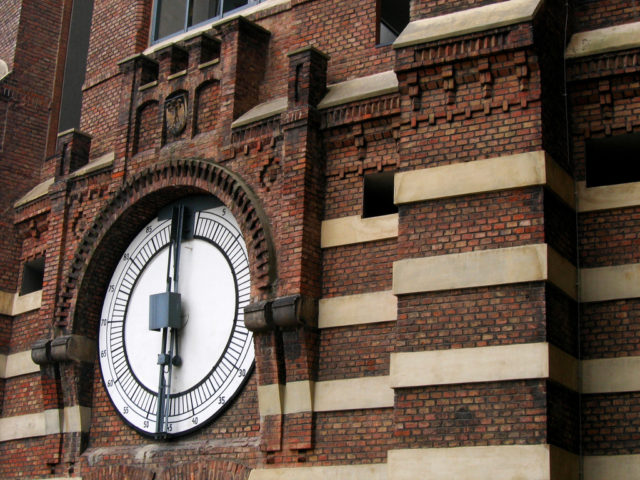
After the changeover from town gas to natural gas between 1969 and 1978, they were no longer used, and were shut down after nearly a century of operation. Gas can be stored underground or in modern high-pressure gas storage spheres under much higher pressures and in smaller volumes than the relatively large gasometers.
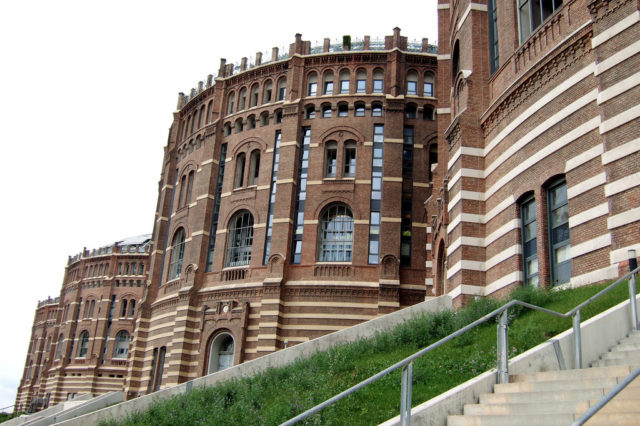
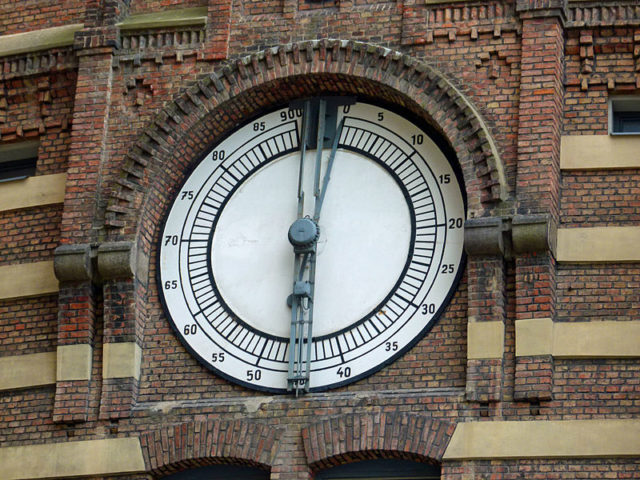
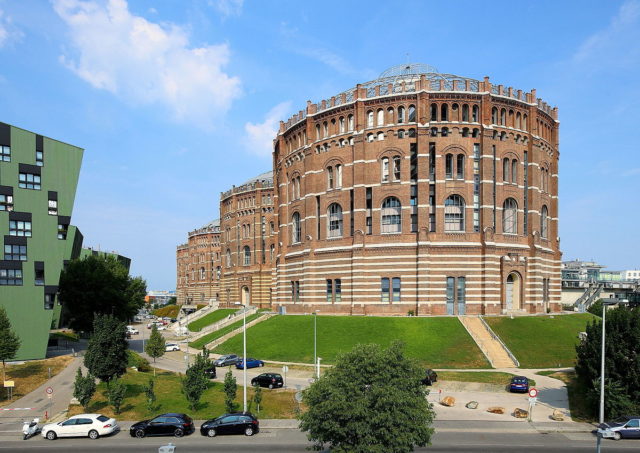
When the Vienna Gasometers were decommissioned in 1984, these gigantic gas tanks stood idle for a period of time. More than a decade after closing, Vienna would eventually kick off the remodeling and revitalization of the Gasometers in 1995, with an international competition calling for new ideas on how to reuse these gigantic cylindrical structures. Four architects came forward with the proposal to turn them into residential complexes and the ornate red brick structures have found new residential and commercial use in modern times.

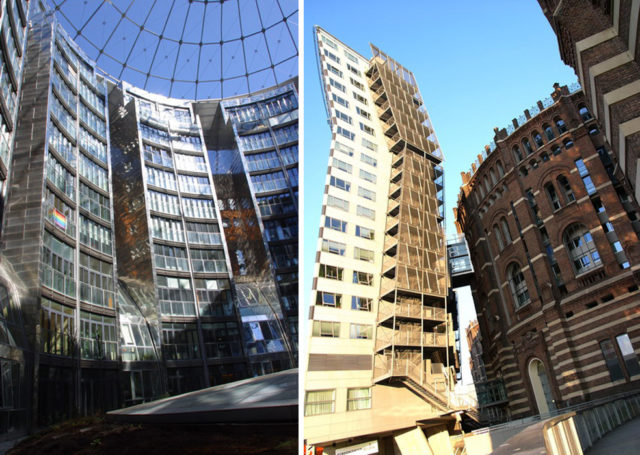
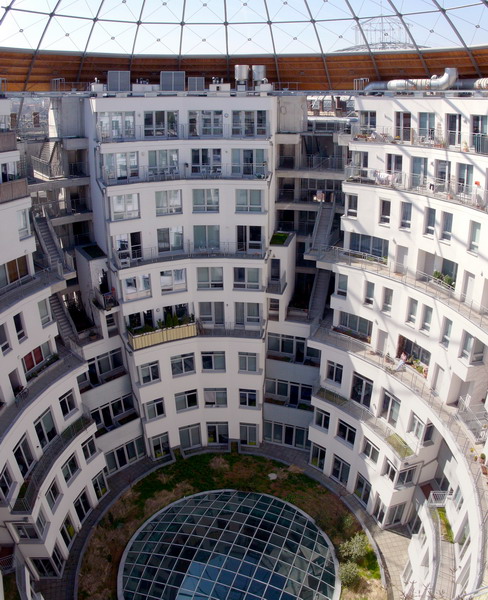
Nowadays the Gasometers functions as indoor facilities and include a music hall (capacity 2000–3000 people), municipal archive, student dormitory, movie theater, and so on. There are about 800 apartments (two-thirds within the historic brick walls) with 1600 regular tenants, as well as about 70 student apartments with 250 students in residence.
